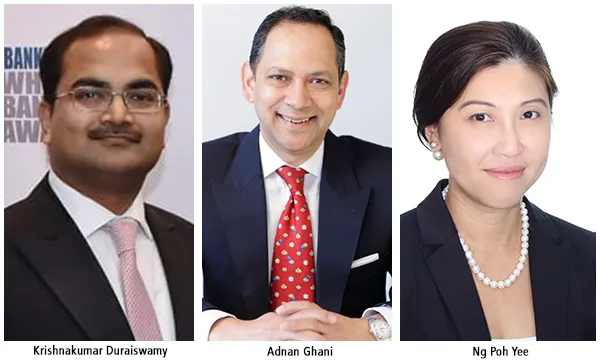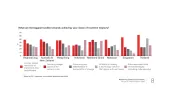
No bank is an island: Beating trade finance challenges
Banks build alliances to tread tricky waters of technology and regulation.
When United Overseas Bank (UOB) partnered with the Monetary Authority of Singapore and Singapore Customs to create the National Trade Platform (NTP), working together made sense given the scale of the industry-wide digitalisation task at hand. Other banks have also chipped in to make NTP a one-stop trade information management system that enables the sharing and reusing of digital data for trade-related transactions amongst businesses, and with the Singapore government. Banks involved with the project seem to have realised that cooperation will not only move the industry forward but also benefit them individually. Adopting a collaborative mentality seems to have become a necessity for banks, at least when it comes to solving the complex technological and regulatory challenges in the trade finance sector.
The beauty of the NTP is it lets traders re-use permit data already uploaded to its system to apply for trade financing, effectively speeding up transactions and advancing the digitalisation of Singapore’s trade finance industry, said Ng Poh Yee, executive director and head, corporate trade sales/financial supply chain management, group transaction banking at UOB.
The NTP is also an open innovation platform, which means businesses and value-added service providers can create new digital solutions and applications that can support any new needs of the end-to-end trade finance cycle, she said. However, the NTP initiative continues to be the exception rather than the rule in Asia. The region faces a huge trade gap and poor implementation of financial technology solutions to reach underbanked areas, according to a recent ADB annual survey.
Ng reckoned the two key challenges affecting wider use of emerging FinTech-based solutions for trade finance are the low rate of industry-wide adoption and the high cost of making technology investments. “This is because FinTech-based solutions require the digitisation of documents, especially those related to the transfer of title of goods, custom certification and clearances,” she said. “As digitisation processes are still under development, they do not cover all cross-border transaction types and this limits market adoption.”
To encourage and establish higher adoption rates of FinTech-based solutions, governments, regulators and banks are working together to standardise processes such as ‘Know Your Customer’ requirements, customs clearance and, in the case of NTP, the legal acceptance of digital trade data, said Ng.
Technology partners
Over in Australia, banks have been collaborating with technology partners since last year to overcome challenges in implementing FinTech solutions, with themes around data and blockchain as focus points, said Adnan Ghani, head of trade finance at Westpac Institutional Bank.
Westpac, ANZ, and IBM, for example, have teamed up to create a proof of concept for the application of blockchain technology to streamline and digitise the issuance of bank guarantees for commercial property contracts with Scentre Group, owner of Westfield Group.
“Currently, large volumes of applications and manual processes that underpin the issuance of these instruments lead to longer lead times and higher risks of error, relatively speaking,” said Ghani.
“Using a streamlined solution that takes advantages of blockchain technology - and the transparency it brings - as a substitute to existing practises, will help businesses issue and change guarantees quickly in the midst of a stressful relocation move, or a property title change-over.”
Following the proof of concept exercise, Westpac and its partners plan to build an industry solution. Ghani said Westpac’s alliances with fintechs provide it with the nimbleness and agility to get solutions to market quickly. But he noted that whilst there are plenty of opportunities to digitise and streamline in the trade finance environment, everyone will need to ride the fintech trend of such solutions with a subpar impact.
“The major issue that hampers fintech solutions is the overall trade community making the shift towards technology,” said Krishnakumar Duraiswamy, head of trade finance, transaction banking group at Abu Dhabi Commercial Bank. “As trade involves several counter-parties, unless everyone in the environment adopt fintech solutions, supply chain is still going to be affected.”
“Banks have to come together with other stakeholders of trade namely shipping companies, freight forwarders, chambers of commerce, inspection agencies, customs, amongst others, to start a new journey towards fintech,” he said, adding that whilst small blockchain pilots will always be successful, the key challenge moving ahead is to bring all counter-parties into single platform.
ICOs still far off
The development of industry solutions that not only standardise protocols but also clear regulatory hurdles takes some time. The emerging realm of cryptocurrency, which some believe holds the potential for shaping the future of trade finance, is one prime example.
Amidst moves by regulators in South Korea and other countries to tighten oversight on the use of cryptocurrencies, the near-term prospects of using initial coin offerings, or ICOs, for trade finance is remote.
“It is still early days to see ICOs for trade finance in Asia or any other part of the globe,” said Duraiswamy, citing the lengthy regulatory process that the sector would need go through before such a trend could catch on. “Regulation takes much longer time to evolve and in the area of cryptocurrencies it would take much longer as it can potentially change the entire landscape on how counterparties exchange value with each other.”
Duraiswamy reckoned no major changes will occur in this area between 2018 and 2020 despite a pressure to shift from entities with vested interests to see the trend flourish, mainly due to banks having their hands full with compliance in anti-money laundering, or AML. “Financial institutions are still trying to cope with regulations and compliance to global AML standards and hence moving into a new world will be difficult.”
Pockets of opportunities
In 2018, the ability to master technological adoption in key industries and deftly moving with regulatory changes will determine the winners and losers in trade finance, as banks forecast a trade acceleration. This year, commodity prices will rebound and help fuel a pick-up in the global economy, Ng said, with UOB holding a cautiously optimistic global trade outlook in view of modest 2018 gross domestic product forecasts for key trading economies including China, Hong Kong, Japan, US and Europe. But pockets of opportunities exist.
“Investments in the TMT industry continue to be on the rise in many countries as governments roll out or sustain their initiatives on automation and productivity, and logistics and telecommunication connectivity in line with their national planning objectives,” said Ng. The construction and infrastructure sectors, especially within the ASEAN region, are notably attractive as well. Ng said UOB will be on guard for any potential rise in U.S. trade protectionism in 2018 and any negative effect on trade flows with key partners like China, India, Japan and South Korea.
Whilst U.S. trade protectionism is a risk factor, Duraiswamy said the major one will be coming from the U.S. rates, which have been rising in 2017 and are expected to rise further in 2018. He foresees trade margins to be hampered as a result of additional rate hikes, affecting the overall growth in trade. Still, those looking for new opportunities will find them in Africa, Middle East, and Europe.
“Banks will have to diversify and be part of the growth in other geographies,” said Duraiswamy. “You will see more of the mix happening between various geographies that will help in trade during 2018.”
Duraiswamy also noted that Asia is going to be a mixed bag with countries like Thailand that are focused on infrastructure growth, and those like Vietnam with growing GDP in 2018 to likely see increased trade flows. “Opportunities would be there in trade. Technology and efficiency will be the key to capture these opportunities.”



















 Advertise
Advertise








